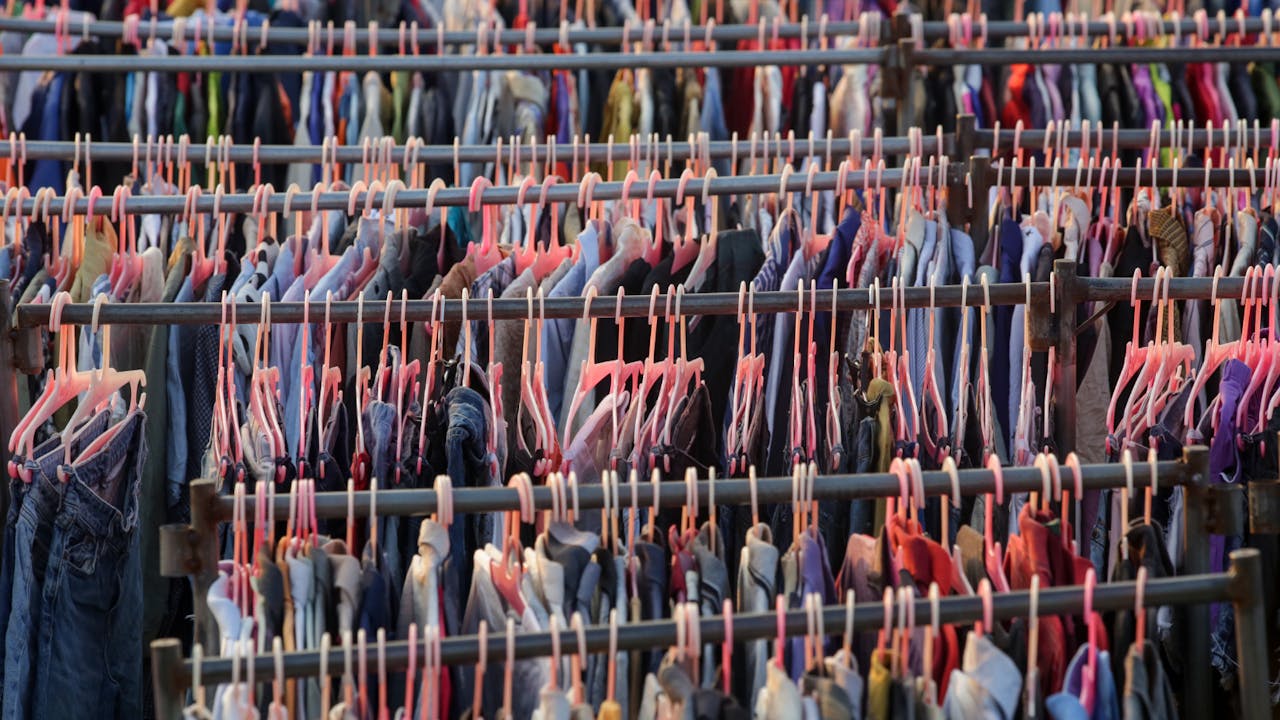
Can AI help the fashion industry cut back on waste?
Some experts argue that algorithms can optimize the industry’s supply chain, thereby reducing its carbon footprint. As we find out, as part of The Drum’s Fashion & Beauty Focus, that might only be half the battle.
The fashion industry is notorious for its heavy environmental toll. Roughly 85% of all clothing and textiles end up in a landfill or an incinerator, according to the National Institute of Standards and Technology. A 2021 report from the World Economic Forum identified the fashion industry as one of the world’s biggest sources of air pollution, contributing around 10% of global greenhouse gas emissions.
The rise of ‘fast fashion,’ meanwhile, which involves cheap production and low-quality standards designed to keep pace with trends that arrive and fade at the speed of social media, has dramatically worsened the industry’s carbon footprint.
As new and troubling data around the fashion industry’s carbon footprint has mounted, so has the pressure on those companies to make a change. H&M, for example, has committed to reducing its emissions by 56% by the end of this decade, while fashion retailer Shein is reportedly aiming to reach net-zero emissions by 2050.
Powered by AI
Explore frequently asked questions
Today, some experts have come to believe that artificial intelligence could help the fashion industry to shrink its carbon footprint.
Clothing returns, for example, comprise a significant chunk of the fashion industry’s carbon footprint. Since customers shopping online aren’t able to physically try on garments, many of those items end up being shipped back to the retailer. According to e-commerce site Shopify, around a quarter of all online clothing purchases end up being returned. Many shoppers order multiple sizes of the same garment in order to hold on to the right fit and return the others, explains Holger Harreis, a McKinsey & Company analyst who authored a 2023 report about the intersection between AI and fashion. (Some big-name fashion brands, including H&M and Zara, have tried to curb these numbers by introducing fees for returns.)
This is one point in the production process where AI can help both brands and customers, Harreis says. “The more you can use AI to understand what customers are actually looking for, [the more you] will reduce returns,” says Harreis. “That will also drive down emissions and at the same time reduce cost.”
Advertisement
Adidas, for example, automatically recommends sizes for particular products based on shoppers’ previous purchases, a feature that Harreis says is “amazingly accurate.” As a regular Adidas shopper, he says his “number of returns has fallen massively” as a result of this offering. The sports retail giant also recently partnered with e-commerce platform Findmine to automatically generate complete outfit recommendations for customers browsing a single product.
Some fashion brands have also been using AI to analyze patterns in consumer demand and predict future trends, which in turn can “reduce the overproduction that has historically contributed to excessive waste in fast fashion,” says Paul Magel, president of IT consulting firm Computer Generated Solutions and a former executive committee member at the Fashion Institute of Technology. “AI models can help identify which designs, colors and sizes are most likely to be in demand, allowing manufacturers to produce only what is needed, significantly lowering the amount of unsold inventory that ends up in landfills.”
The concept of AI being deployed to curb the fashion industry’s carbon emissions is somewhat counterintuitive, considering the fact that the tech itself has come under the spotlight for its huge environmental impact. OpenAI’s ChatGPT consumes over half a million kilowatt-hours of energy each day, according to a March report from The New Yorker, compared with the relatively tiny 29 kilowatt-hours produced daily by the average US household. Growing data-processing demands from the exploding AI industry are straining the US energy grid, forcing some of the bigger players to get creative. For example, just last month, it was revealed that Microsoft – OpenAI’s primary financial backer – is pursuing plans to restart operations at a decommissioned nuclear plant in order to fuel its AI demands.
Advertisement
According to Harreis, the real cost-saving and emission-reducing potential of AI is being eclipsed by customer-facing applications of the technology. Generative AI is very much a hot industry buzzphrase, so it stands to reason that fashion brands are focused on making their use of AI very conspicuous to their audiences. European fashion retailer Zalando, for example, has announced that its AI assistant has launched globally.
And while generative AI has been a particular focus for many brands, the real potential of AI, according to Harreis, is found in its back-end applications – those niches of the manufacturing and distribution processes that aren’t directly visible to consumers. In support of this view, a study published in May by Australian researchers found that AI-enabled data management can help fast fashion brands cut back on both costs and carbon emissions. (Not quite as eye-catching as a branded chatbot, perhaps, but arguably more effective in driving long-term sustainability goals.)
“There’s too little focus on really understanding how to turn AI into a tool and not just using it as a toy,” says Harreis. “[Brands] need to understand that investments into technology are not enough … this is really about rewiring the entire organization… Every dollar you spend on creating the tool that you will use, you need to spend five times as much in changing the operating model, changing the processes, upskilling and reskilling [your] people, and curating the data.”
Suggested newsletters for you
Daily Briefing
Daily
Catch up on the most important stories of the day, curated by our editorial team.
Ads of the Week
Wednesday
See the best ads of the last week – all in one place.
The Drum Insider
Once a month
Learn how to pitch to our editors and get published on The Drum.
But some say that optimizing the supply chain is the easy part; the more daunting problem is both cultural and psychological, according to Atnyel Guedj, chief product officer at Made2Flow, a company that develops decarbonization solutions for fashion retailers.
As consumers, he says, we’ve been programmed through extensive advertising campaigns to feel constantly dissatisfied with our current wardrobe and to, therefore, feel constantly compelled to buy more clothes. At the same time, the fashion industry has an incentive to continually push the rate at which trends change; the more often we feel as if our clothing is outdated, the more psychologically primed we’ll be to make a purchase.
“The fact is that human behavior has been socially programmed by the retail industry in general to have a very short attention span and always want something new,” says Guedj. “The next time you go to the store and buy something, pay attention to how you feel about it: you’ll be excited the moment that you pay the money and get the goods and your excitement will diminish very quickly after that.” A quick dopamine hit, followed by a crash, followed by a craving for the next purchase.
According to this view, curbing the fashion industry’s environmental impact won’t be a simple matter of implementing new and more advanced technology; it will require overhauling the incentive structure built into the industry itself. “Reducing waste will mean choosing a different business model,” says Guedj.
For more on the latest happenings in AI and other cutting-edge technologies, sign up for The Emerging Tech Briefing newsletter.


